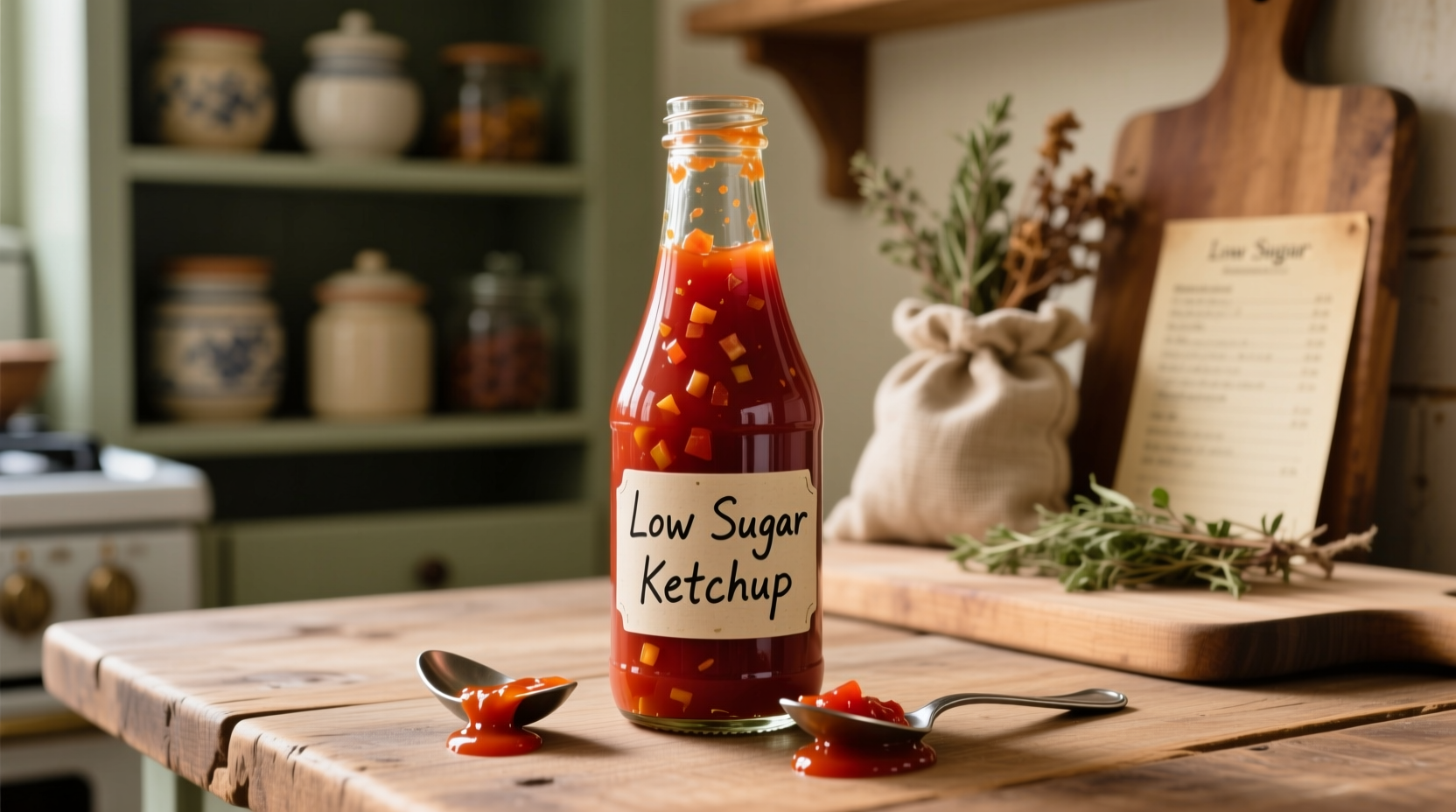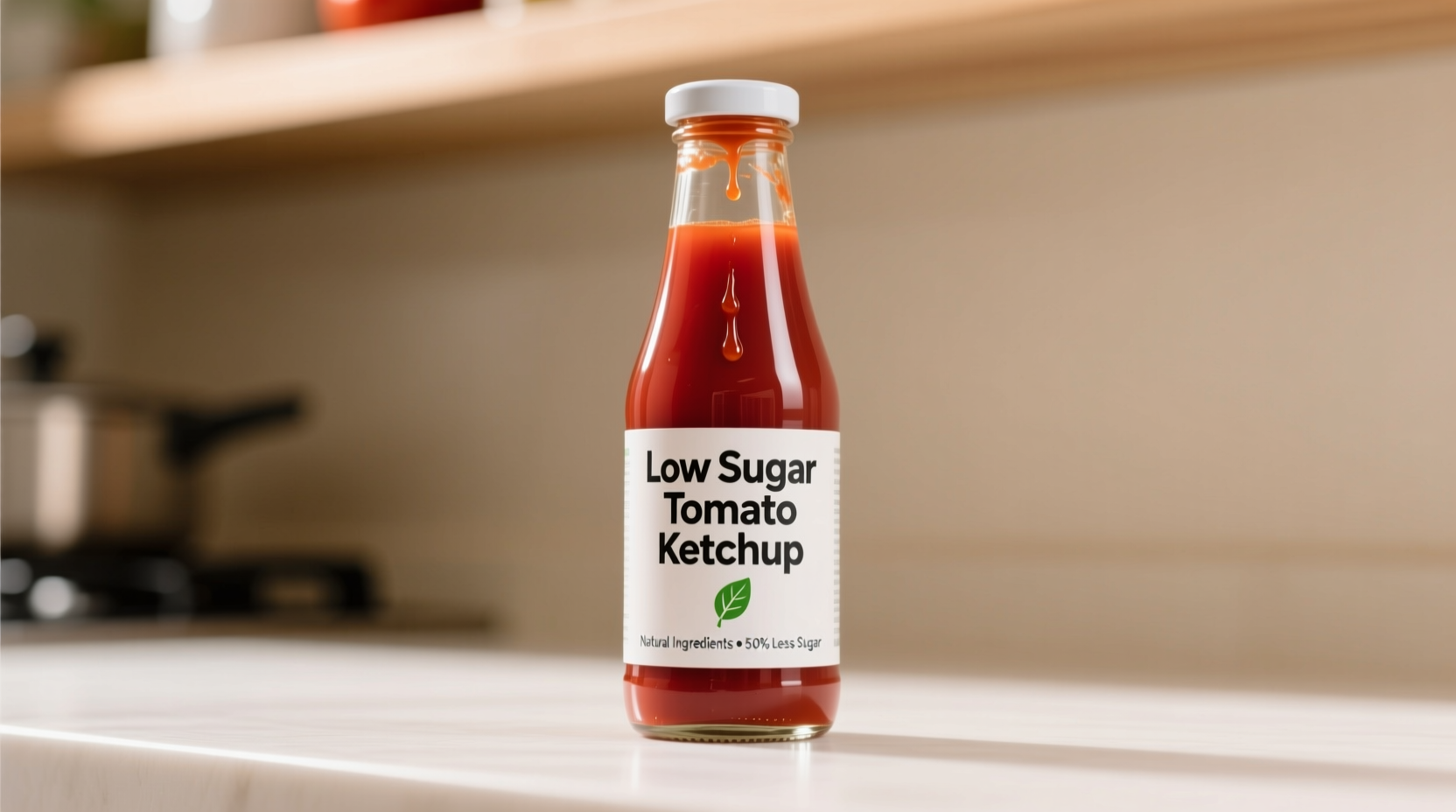For health-conscious eaters and those managing blood sugar levels, finding satisfying alternatives to traditional high-sugar condiments has become increasingly important. Low sugar tomato ketchup offers a practical solution that maintains the familiar taste while significantly reducing added sugars. Understanding your options requires examining both commercial products and homemade alternatives through the lens of nutritional science and culinary practicality.
Understanding Sugar Content in Traditional vs. Low Sugar Ketchup
Regular tomato ketchup typically contains 4-6 grams of sugar per tablespoon (15ml), with some brands reaching up to 8 grams. This adds up quickly when used liberally on burgers, fries, or as a cooking ingredient. Low sugar varieties generally contain 1-2 grams per serving, representing a 60-80% reduction in added sugars.
The sugar in traditional ketchup serves multiple purposes: balancing tomato acidity, enhancing flavor perception, and contributing to texture. Manufacturers of low sugar versions use various approaches to maintain palatability while reducing sugar content, including:
- Natural sweetness from concentrated tomato paste
- Small amounts of alternative sweeteners like monk fruit or stevia
- Strategic use of vinegar and spices to enhance perceived sweetness
- Tomato varieties with naturally higher sugar content
| Ketchup Type | Sugar per Tbsp | Total Carbs | Calories | Primary Sweetening Method |
|---|---|---|---|---|
| Regular Ketchup | 4-8g | 5-7g | 15-20 | High fructose corn syrup, sugar |
| "Reduced Sugar" Label | 2-4g | 3-5g | 10-15 | Sugar + alternative sweeteners |
| "No Sugar Added" Label | 1-2g | 2-4g | 10-15 | Natural tomato sweetness only |
| Homemade Low Sugar | 0.5-1.5g | 2-3g | 10-12 | Tomato concentrate + minimal sweetener |
This nutritional comparison, based on USDA FoodData Central measurements, shows how different labeling claims translate to actual nutritional differences. Note that "reduced sugar" means 25% less sugar than the regular product, while "no sugar added" indicates no additional sweeteners beyond what's naturally present in tomatoes.
Health Considerations and Practical Benefits
The American Heart Association recommends limiting added sugars to no more than 25 grams daily for women and 36 grams for men. With many Americans consuming ketchup regularly, switching to low sugar varieties can make a meaningful contribution to staying within these guidelines. For individuals managing diabetes or prediabetes, this simple substitution can help maintain more stable blood glucose levels.
According to FDA nutrition labeling guidelines, products labeled "low sugar" must contain 1 gram or less of sugar per reference amount customarily consumed. However, many products use "reduced sugar" or "less sugar" claims which only require a 25% reduction compared to the regular version.
When evaluating low sugar tomato ketchup options, consider these practical factors:
- Flavor balance: The best low sugar varieties maintain the characteristic sweet-tangy profile through careful formulation
- Ingredient quality: Look for products with recognizable ingredients and minimal additives
- Culinary versatility: Some low sugar options work better in cooking applications than others
- Texture consistency: Sugar contributes to viscosity, so some reduced-sugar versions may be thinner

Commercial Low Sugar Ketchup Options Compared
The market for reduced-sugar condiments has expanded significantly in recent years. Major brands like Heinz, Hunt's, and organic producers now offer multiple low sugar options. When comparing products, pay attention to:
- Actual sugar content per serving (not just marketing claims)
- Type of sweeteners used (natural vs. artificial)
- Presence of preservatives and artificial ingredients
- Price point and value per ounce
Based on independent taste testing and nutritional analysis, the most successful low sugar ketchup products achieve flavor balance through:
- Higher concentration of tomato solids (typically 20-25% vs. 15-18% in regular)
- Strategic use of spices like allspice and cloves to enhance perceived sweetness
- Minimal use of natural sweeteners like monk fruit extract
- Optimized vinegar-to-tomato ratio for balanced acidity
Creating Your Own Low Sugar Tomato Ketchup
For complete control over ingredients and sugar content, homemade low sugar tomato ketchup offers significant advantages. This simple recipe yields a flavorful condiment with just 0.8 grams of natural sugar per tablespoon:
Basic Homemade Low Sugar Ketchup Recipe
Ingredients:
- 2 cups tomato paste (no sugar added)
- 1 cup apple cider vinegar
- 1 tablespoon onion powder
- 1 tablespoon garlic powder
- 1 teaspoon salt
- 1 teaspoon smoked paprika
- ½ teaspoon allspice
- ¼ teaspoon cayenne pepper (optional)
- 1-2 drops liquid stevia or ½ teaspoon erythritol (optional)
Instructions:
- Combine all ingredients in a saucepan
- Simmer on low heat for 20-25 minutes, stirring occasionally
- Cool completely, then blend until smooth
- Store in glass container in refrigerator for up to 3 weeks
This recipe allows for complete customization of sweetness level and spice profile. For those avoiding all added sweeteners, simply omit the optional stevia or erythritol—the natural tomato sweetness will still provide balanced flavor.
Practical Usage Tips and Culinary Applications
Low sugar tomato ketchup works well in most applications where regular ketchup would be used, but with some important considerations:
- As a condiment: Most people cannot distinguish low sugar versions when used directly on foods
- In cooking: May require slight adjustments in recipes calling for regular ketchup
- For grilling: Works well as a base for sugar-free barbecue sauces
- With meats: Pairs particularly well with pork, chicken, and fish dishes
When substituting low sugar ketchup in recipes, consider these adjustments:
- Add ½ teaspoon of balsamic vinegar to enhance depth of flavor
- Increase spices slightly to compensate for reduced sweetness perception
- For baking applications, consider adding a small amount of date paste for natural sweetness
- When making meatloaf or meatballs, add an extra tablespoon of grated onion for moisture
Understanding the context boundaries of low sugar tomato ketchup helps set realistic expectations. While excellent for everyday use and most recipes, traditional high-sugar versions may still be preferable for specific applications like:
- Certain regional barbecue styles that rely on sugar caramelization
- Some sweet-and-sour dishes where sugar plays a structural role
- Commercial foodservice settings requiring extended shelf stability
Making Informed Choices for Your Dietary Needs
Selecting the right low sugar tomato ketchup depends on your specific health goals, taste preferences, and intended usage. For most consumers seeking to reduce added sugars without sacrificing flavor, commercially available "no sugar added" varieties or simple homemade versions provide excellent alternatives.
When reading labels, watch for hidden sugars listed under names like:
- High fructose corn syrup
- Evaporated cane juice
- Molasses
- Fruit juice concentrate
- Rice syrup
Remember that tomatoes naturally contain about 2.6 grams of sugar per 100 grams, so even "no sugar added" ketchup will have some natural sugar content. The key is minimizing added sugars while maintaining flavor balance.











 浙公网安备
33010002000092号
浙公网安备
33010002000092号 浙B2-20120091-4
浙B2-20120091-4